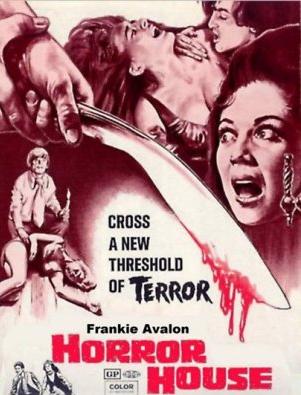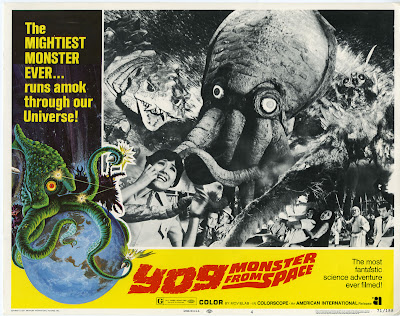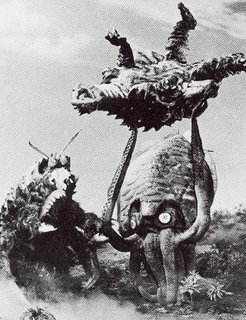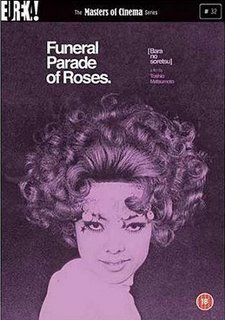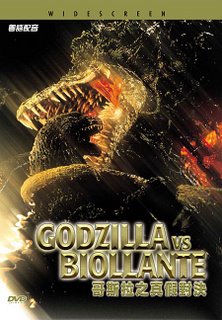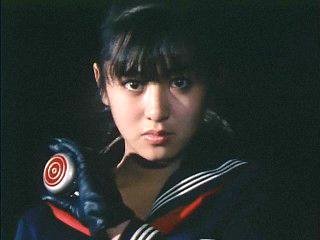aka HORROR HOUSE (US title)
(1969, UK)
"They thought it would be fun to be frightened!"
I keep revisiting The Haunted House of Horror, partly out of nostalgia having watched it late at night on TV over three decades, partly because I'm sure it would have been a classic, if only it had been left alone. I've always felt that there was something different about the film, particularly the way the slasher plot is subverted in a way that hasn't been seen since. I can't spoil it for the uninitiated though...
Because of a huge script rewrite and reshoot halfway through production, we've lost what could have been a key horror film of the sixties. An intricate, dark, ground-breaking story that has almost been reduced to a silly teen slasher. As it stands, it's still ten years ahead of Halloween and Friday the 13th, with murder scenes far bloodier than either.
"Let's have a seance." They do. They get scared. They split up and scour the old dark house by candlelight. One of them gets hacked up by a very large knife. The party's over... But wait a minute, since the house was all closed off and bolted from the inside, that must mean that one of them is the killer! Leader of the gang, Chris decides to avoid trouble with the police and solve the mystery himself, by getting the gang to agree to lie about the murder and hides the body...
In the Tigon DVD boxset, there's a director's commentary track that helps explain - for instance, one of the central gang members was bumped up from bit-part to co-star when David Bowie ducked out of the project. Bowie would have played Richard, a character that Julian Barnes annoyingly plays as naive, but still catches an essence of ambiguous sexuality that the part originally required. Similarly, Gina Warwick as Sylvia had her part totally changed, with a completely trumped up subplot about her affair with a married man (actor George Sewell on a break from TV's UFO) that dominates the movie.
Thankfully, there are more experienced actors such as Frankie Avalon - here trying to get back to serious roles as Chris, a rich kid playing down a drugs charge. Quite a change from his endless Beach Party movies and way before his hit cameo in Grease.
But also, there's a genuinely unsettling hysteria that overtakes the characters when they're in the house. For a few delirious scenes, it evokes a ghastly sense of the killer's madness, and what it would be like to be trapped in a house with a nutter with a knife. This is particularly helped by the soundtrack kicking in with frantic, echoing violins...
Making a debut on DVD from Anchor Bay (in the boxset below), the film has been remastered from one of the brighter prints. The VHS version, and recent TV showings have been from a ridiculously darkened print, where you could barely see anything at all in the night scenes. This DVD makes the film look almost brand new, almost too bright! Considering the original title was The Dark, we now see characters stumbling around in well-lit sets pretending not to see where they've dropped their candles.
Armstrong, in surprisingly good humour, constantly has to point out scenes where "none of this is mine". It was his first film as director and he'd set up an intricate script with complex, realistic characters and a gay character pivotal to the relationships within the gang. This plotline is now only visible as sub-text and should have elevated the film to that of a controversial thriller.
Thankfully that same commentary has made it over onto this new UK DVD (released November 2011), the movie finally presented as a stand-alone release, further improved by a 16:9 widescreen anamorphic presentation. This reveals more picture information at the sides while using the same source, with all the bloody scenes of the Tigon boxset version included (I checked this with a side-by-side comparison). Armstrong's original script of The Dark is also included on the disc as a pdf file. On presentation alone, this Odeon Entertainment DVD is the definitive release for me.








